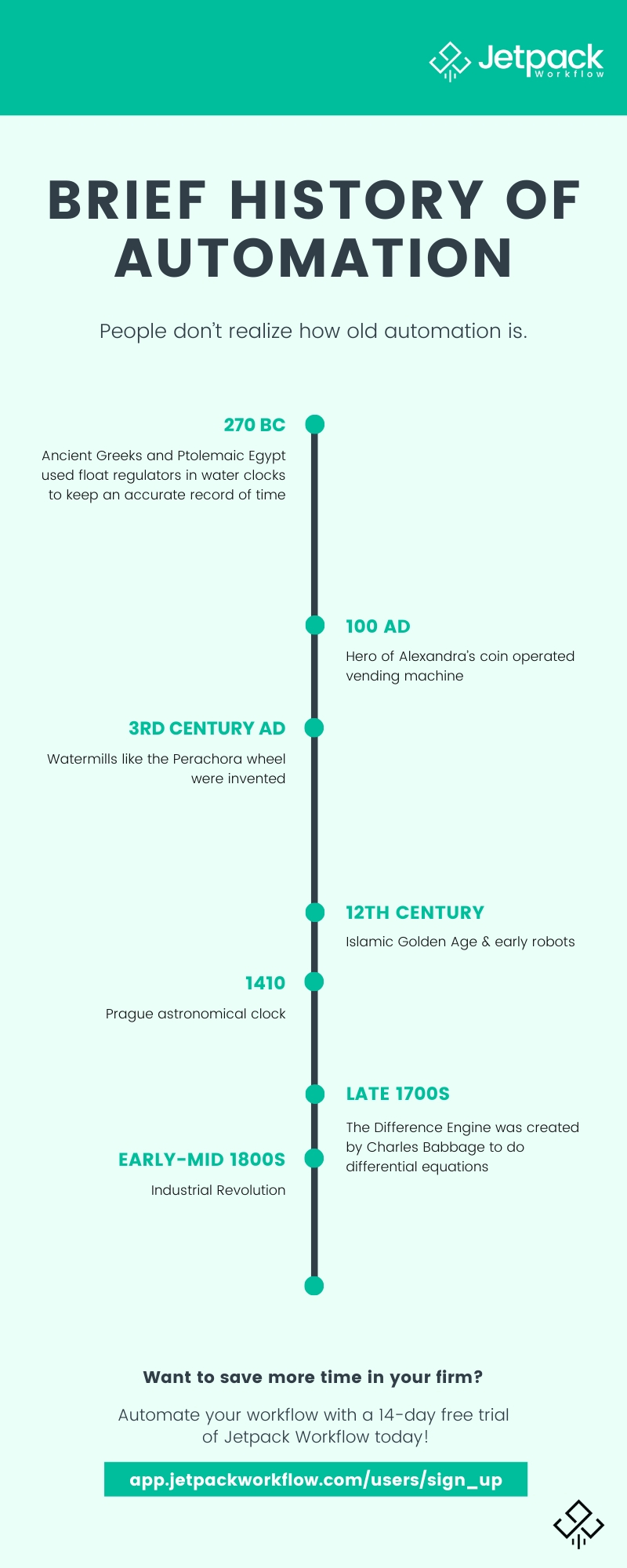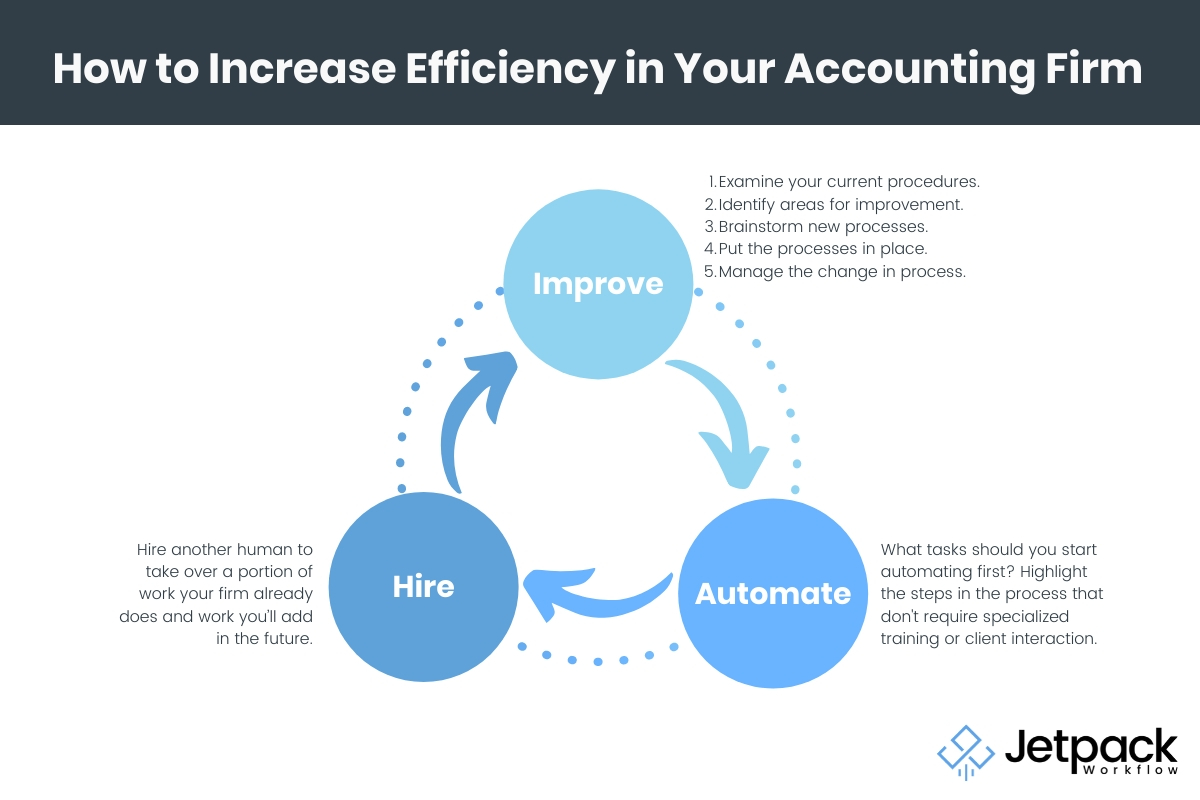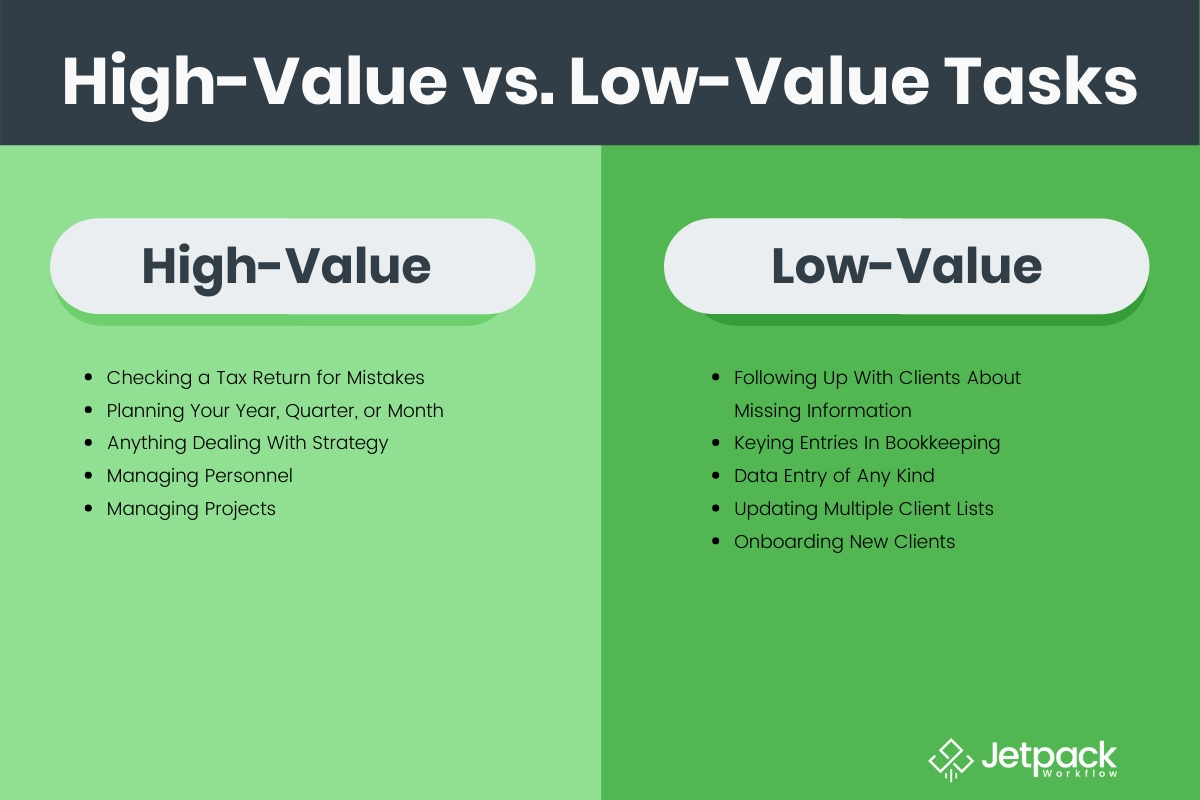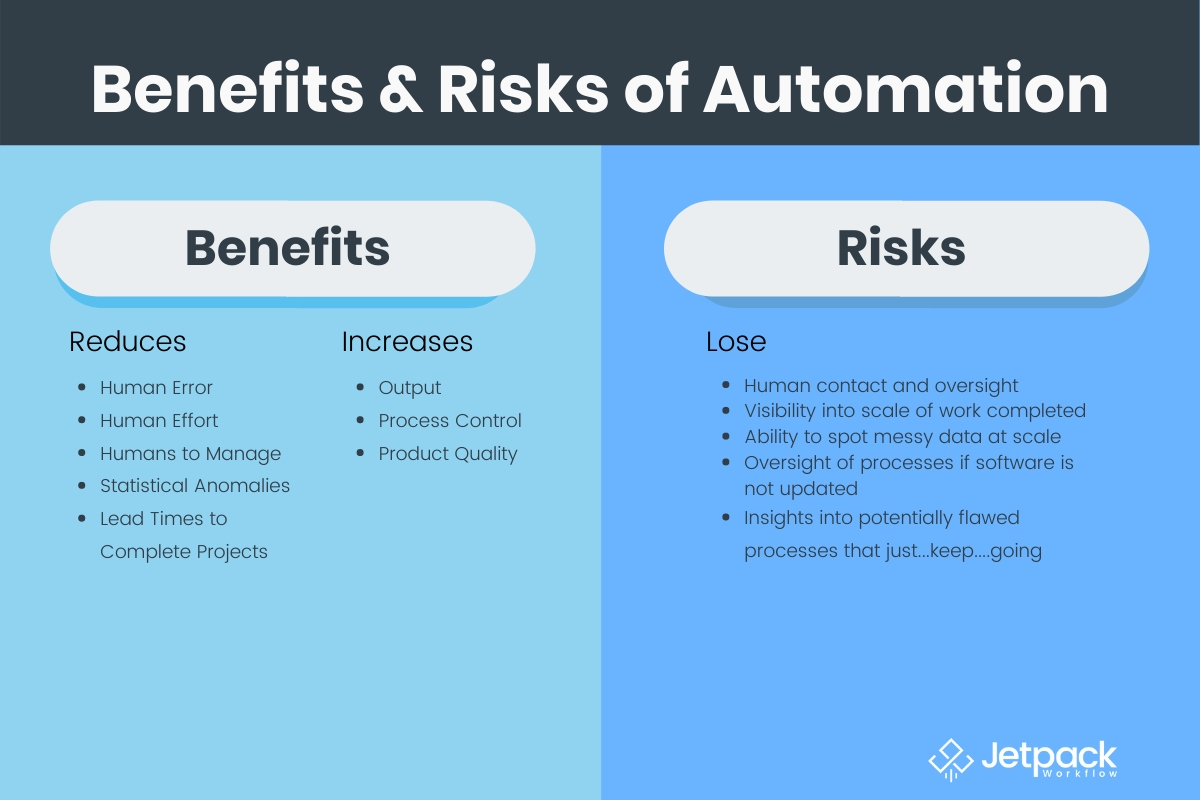3 Steps to a More Efficient Accounting Firm

For thousands of years, humans have dreamed of getting work done without requiring humans to do the work. This is the basic principle behind automation; it’s getting work done with little-to-no human intervention. We’ve been achieving for as long as we’ve been trying.
Automation often sounds like the best solution for any inefficient process in your business. If you automate a process, you’ll get more done with less time and effort in the long run. But, you often have a large upfront investment of time and resources which can be an overwhelming hurdle to overcome. Just because you can automate something doesn’t mean you should.
Instead, consider all of the possible approaches to increasing efficiency in your firm. The three major approaches include improving existing processes, automating, and hiring.
- Improve: Start by examining your current procedures. Next, identifying areas for improvement, brainstorming new processes, putting the processes in place, and managing the change in process. Operational efficiency can involve automation, but it doesn’t always. Sometimes, you can take tasks which must be completed by human hands and make them more efficient.
- Automate: Automation can offer the most value for your dollar. After all, hiring and operational efficiencies can be expensive and time-consuming. Automation allows more work to be done with less human effort or intervention.
- Hire: You hire another human to take over a portion of work your firm already does and work you’ll add in the future.
This specific order is important, as you’ll see in each breakdown section. Let’s dive into each step of the process.
Improve
Start with an attempt to improve the efficiency of a process and standardize it before trying to automate it or hire more people. The first step of improving a process is to map the current steps needed to fulfill that process.
How to make an underlying process more efficient:
- Map the steps of your current process.
- Collect input from stakeholders about which steps can be improved or changed.
- Identify which step takes the longest time, or is the least efficient.
- Brainstorm ideas with stakeholders about how to improve the process.
- Solidify buy-in from stakeholders about the proposed improvement.
- Train your staff on the new process.
- Go live with the new process.
- Lead the change management to ensure the improvement becomes permanent.
Making a process more efficient isn’t always easy, but it can be the best option and often provides the best ROI.
Importance of starting with mapping current steps of a process:
- This exercise will tell you what people are actually doing right now. This will sometimes be enough to help spark ways you can improve it.
- It will help you to gain buy-in from the stakeholders who execute the process on a daily basis. You get the chance to listen to them and figure out what’s important to the people with boots on the ground.
- It will encourage alignment within your team. Creating a process map allows people to visually agree on the current method.
- A map of the process will help you to automate the process later if you decide you need to automate.
The main benefit of starting with improving is that it requires the least amount of upfront investment of capital. You don’t need a new budget to map a process. You don’t have to hire someone new. You only need to solicit feedback from existing team members, then make a priority of improving the process.
WARNING: Automating a task is often suggested during the brainstorming stage. This is where many firms go wrong in their priorities for increasing efficiency. People might lean into automation before they’re ready or have sufficiently optimized the underlying process. It’s hard to hold back from the lure of, “just let the robot do it.” Instead, start by “doing things that don’t scale.” Put in the manual effort first, then apply the wonders of computers after you fully understand the manual effort to never have to do it again.
TLDR: Start by improving the process without automation first so you better understand the underlying process. This will help you to locate the point for maximum leverage to use for future automation.
Automate
After you’ve improved the process as much as possible without automation, it’s time to consider automation. What tasks should you start automating first? Highlight the steps in the process which do not require specialized training or client interaction.
Ideal steps to automate include tasks like data entry between systems. Manual double entry can be a big timesuck; this is where redundancy-reducing tools like Zapier come to the rescue. If you can automatically update your client list in all existing locations, then that’s often a great place to start.
Pro Tip: Automate the flow of information from your chosen single source of truth (SSoT) out to the dependent softwares.
Your SSoT should always be accurate. Accountants often choose a billing software as their SSoT. Your billing software will need to have an up-to-date customer profile because it helps to ensure you get paid. Multiple sources of the same kind of information could place you in an infinite loop: one software updates the customer information, another sees that update and updates its own version of that information, then the original software sees that update and tries to update itself again… Your automations should be one-directional.
High Value vs. Low Value Tasks
In your accounting firm, any automation focuses on taking low-value tasks and making them automatic. High-value tasks require some sort of skill or expertise to perform. Low-value tasks do not require a lot of training or experience to perform.
You get the same 24 hours in the day as Beyonce. The difference is she figured out how to best leverage her time for maximum results. Automation is a great way to leverage your time and effort; you’ll be the Bey of your firm in no time!
Benefits and Risks of Automation
The benefits of automation are simple: with more low-value tasks automated, you save time on each low-value task. That time adds up when automation frees you up to focus on more profitable, high-value tasks and strategy to move your firm forward.
Conversely, consider the time it will take to set up an automation. Hard work is necessary to automate a process correctly. Automation is not a set-it-and-forget it solution; you’ll need to manage and maintain any process you automate. It may not be a Catch-22 situation, but it’s important to weigh the pros and cons of automation before diving into an automation project.
Behind-the-Scenes Example: How We Messed Up With Automation
Back when we were a small software company of 6 people, we once tried to automate how records were updated in our CRM. We thought we had everything set up correctly and set the automation live. The initial tests said everything was a go so we set it and forget it. Can you guess what went wrong?
We didn’t monitor the system after we set it up.
The automation went bonkers and wrote new attributes to every contact in our CRM. What should have been a time-saving venture became a large data clean-up project and a slight reticence to automate processes in the future. Heed our warning; this too can happen to your firm!
Hire
Hiring should be your last resort when increasing the capacity of your firm. If you’ve improved the process and automated what you can, then you can consider hiring new employees.
Hiring is an expensive and time-consuming process. There is always a possibility you could hire someone who doesn’t work out for your firm. And, even if they do work out, you’re going to have to manage that employee, ideally, forever.
Traditionally, this is the first step firms consider because that’s how firms operated for hundreds of years. The tools did not exist to manage teams or automate processes like they do today. Now though, you can easily automate a process to increase productivity, then shift your human resources to more intellectually demanding tasks. If you jump right to hiring before you improve and automate the process, then you could end up hiring an employee to do a broken or extremely inefficient process. You may have increased capacity, but you’re sacrificing your margins before you actually have to.
Conclusion
Humans have always been searching for ways to get more work done with less human effort. If necessity is the mother of invention, then human laziness was the mother of the invention of automation.
Looking to save more time in your firm? Automate your workflow with a 14-day free trial of Jetpack Workflow today!









